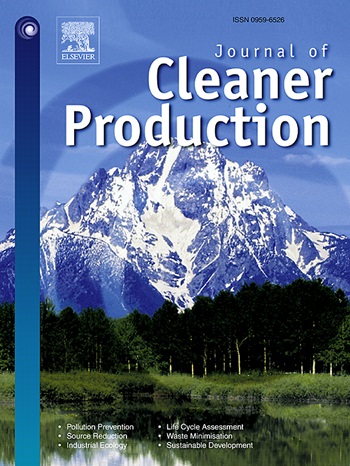Biochar for carbon-negative hydrogen production from fossil fuel reservoirs
IF 9.7
1区 环境科学与生态学
Q1 ENGINEERING, ENVIRONMENTAL
引用次数: 0
Abstract
Biochar is an abundant and inexpensive material derived from biomass, renowned for its exceptional physicochemical properties such as high surface area and superior dielectric parameter. In this perspective, we first propose and evaluate a carbon-negative approach that utilizes biochar for in-situ hydrogen (H2) production from natural gas reservoirs through electromagnetic (EM) heating. By critically reviewing synthesized parameters, properties, and applications of biochar, it becomes clear that biochar can boost natural gas conversion to hydrogen when used as a catalyst. Additionally, the subsurface use of biochar improves EM-heating efficiency, enhances economic viability, aids in agricultural waste management, and captures substantial amounts of carbon underground. These advantages make biochar a perfect material for optimizing in-situ hydrogen production from gas reservoirs via EM heating. In this paper, we highlight the fundamentals, prospects, and knowledge gaps of this new technology. Key factors such as catalytic performance, engineering feasibility, economic viability, and industrial synergies are thoroughly evaluated. The challenges in biochar synthesis, hydrogen production efficiency, well safety, and downhole technologies are also discussed. By leveraging multidisciplinary industry resources, renewable energies, and public support, it is anticipated that the hydrogen cost of this approach could fall below $1/kg H2, thus enabling a transformative, affordable, and carbon-negative hydrogen production from fossil fuel reservoirs.


生物炭是从生物质中提取的一种丰富而廉价的材料,以其特殊的物理化学特性(如高比表面积和优异的介电参数)而闻名。从这个角度出发,我们首先提出并评估了一种负碳方法,即利用生物炭通过电磁(EM)加热从天然气储层中就地生产氢气(H2)。通过仔细研究生物炭的合成参数、特性和应用,我们清楚地认识到,生物炭作为催化剂可促进天然气转化为氢气。此外,在地下使用生物炭还能提高电磁加热效率,增强经济可行性,有助于农业废物管理,并在地下捕获大量碳。这些优势使生物炭成为通过电磁加热优化气藏原位制氢的完美材料。在本文中,我们将重点介绍这项新技术的基本原理、前景和知识缺口。本文全面评估了催化性能、工程可行性、经济可行性和工业协同效应等关键因素。此外,还讨论了生物炭合成、制氢效率、油井安全和井下技术等方面的挑战。通过利用多学科工业资源、可再生能源和公共支持,预计这种方法的制氢成本可降至 1 美元/千克 H2 以下,从而实现从化石燃料储层制取碳负氢的变革性、经济性。
本文章由计算机程序翻译,如有差异,请以英文原文为准。
求助全文
约1分钟内获得全文
求助全文
来源期刊

Journal of Cleaner Production
环境科学-工程:环境
CiteScore
20.40
自引率
9.00%
发文量
4720
审稿时长
111 days
期刊介绍:
The Journal of Cleaner Production is an international, transdisciplinary journal that addresses and discusses theoretical and practical Cleaner Production, Environmental, and Sustainability issues. It aims to help societies become more sustainable by focusing on the concept of 'Cleaner Production', which aims at preventing waste production and increasing efficiencies in energy, water, resources, and human capital use. The journal serves as a platform for corporations, governments, education institutions, regions, and societies to engage in discussions and research related to Cleaner Production, environmental, and sustainability practices.
 求助内容:
求助内容: 应助结果提醒方式:
应助结果提醒方式:


